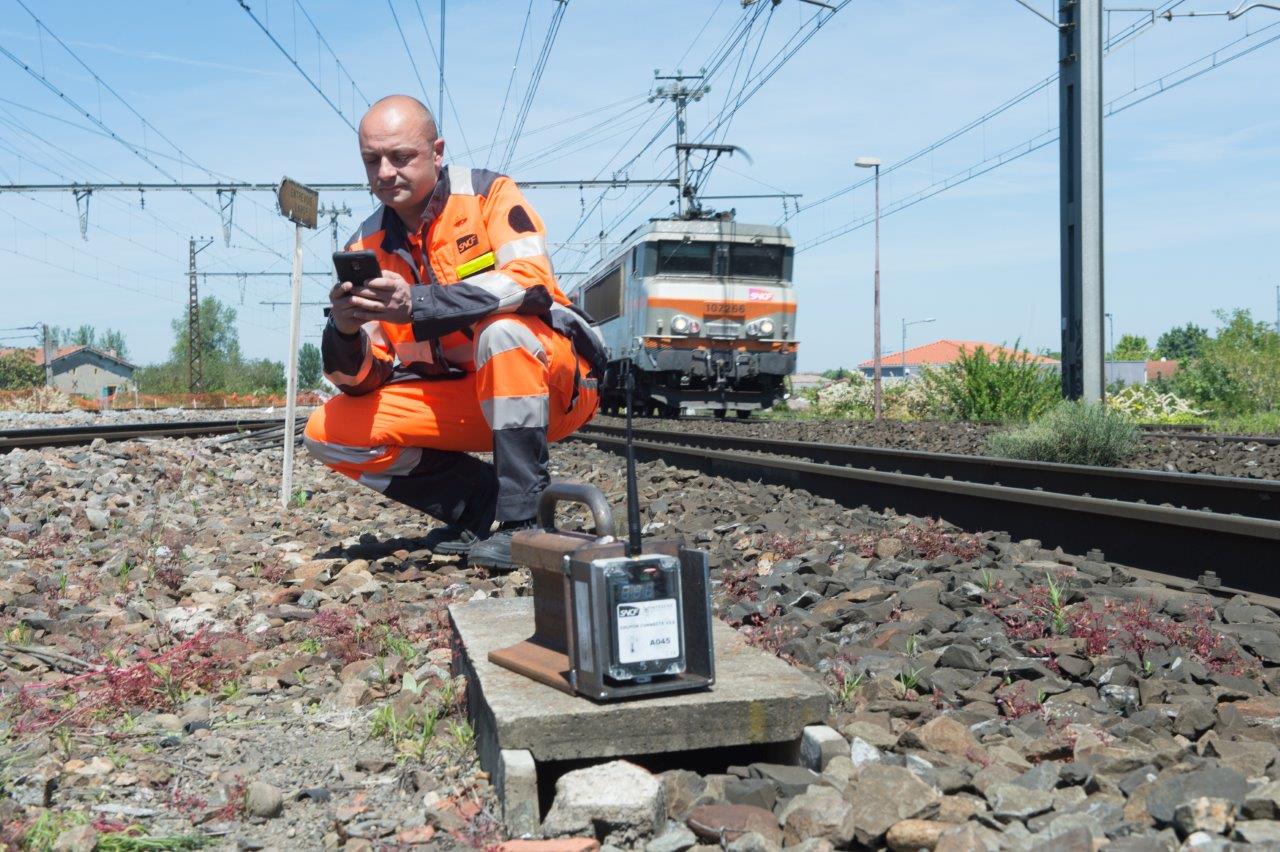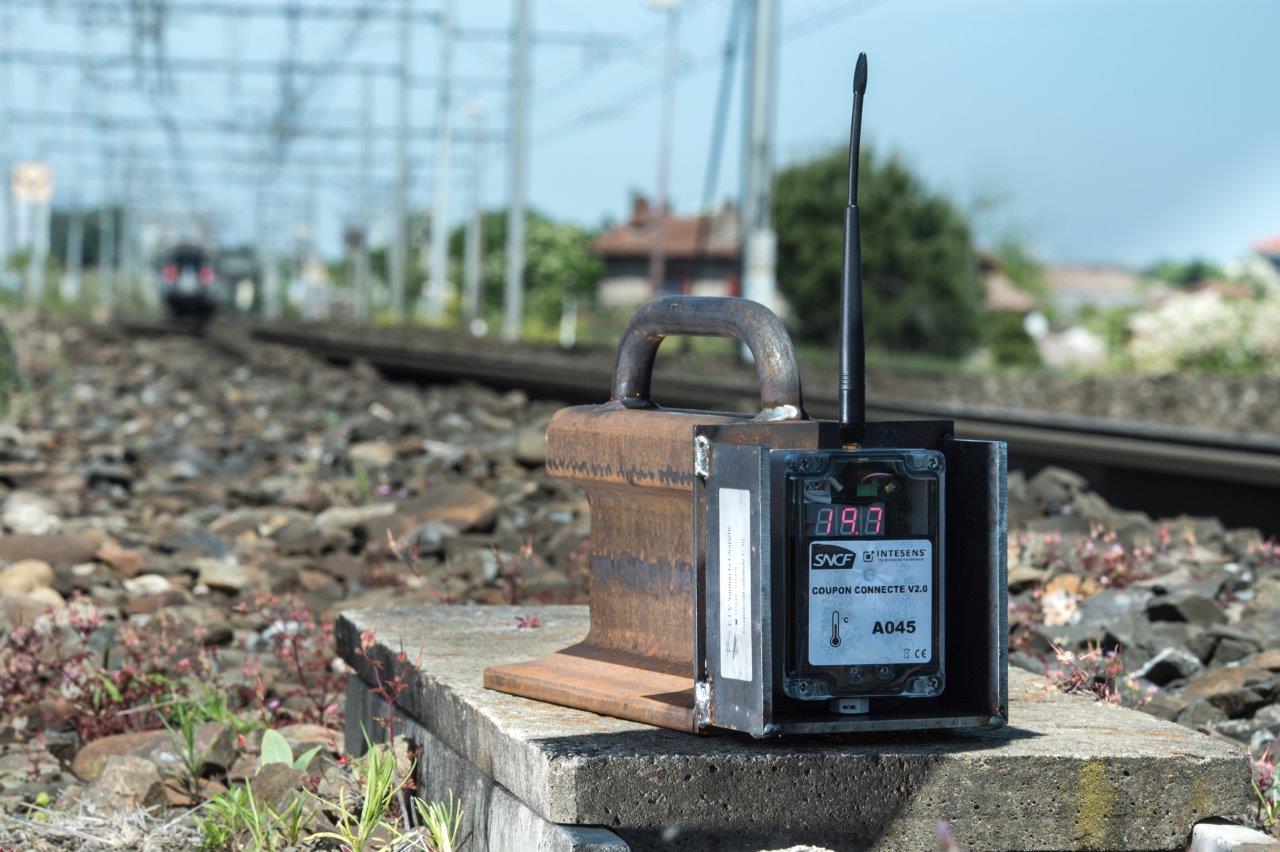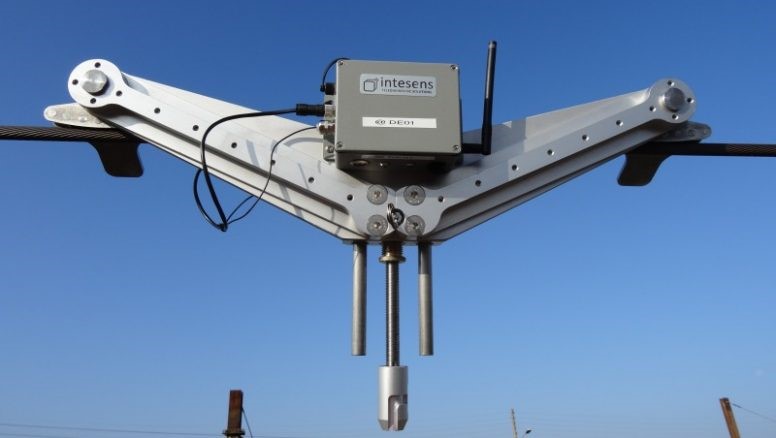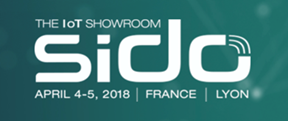The old adage “Prevention is better than cure” is now being applied to the rail industry thanks to IoT. Installing sensors on railway tracks and on trains allows railway companies to carry out predictive maintenance: we looked at how the French National railways have done just this.

The railways enter the age of smart and predictive maintenance.
SNCF, the French national railways, have invested over €500 million on its digital transformation, implementing systems for remote monitoring and better fault prevention. The group has been working with Toulouse-based start-up Intesens, winner of the 2015 SNCF challenge digital trophy in the “connected infrastructures” category, for this project. In 2016, SNCF asked them to deploy pilot applications to monitor its infrastructures, embedded equipment and equipment at its railway stations.

The group has also implemented Intesens’ technology to monitor the temperature of railway tracks.
From 15 May to 15 September, the temperature of the train tracks is being closely monitored in order to prevent tracks expanding and buckling. Thus, temperature readings are no longer done manually but automatically, thanks to geo-located temperature sensors installed on the edge of railway tracks. The readings are then automatically published on a secure web server and agents are notified when temperature thresholds are exceeded. The first deployment phase involved installing 500 sensors, i.e. around 1 every 60 km. “Eventually, we plan to install one every 5 to 10 km, which will be thousands, to ensure monitoring of all 30,000 km of the French railway network,” explains Xavier Lafontan, CEO and founder of Intesens, to l’Usine Digitale.

Intesens sensors, which track distances covered in real time
SNCF has also started using connected mechanical stress sensors on overhead contact systems to track them remotely and in real time via a web platform. As soon as an anomaly is detected, an alert is triggered and sent to the maintenance operator via a low-speed network designed specially for IoT. The company that provides connected maintenance solutions has thus designed a solution using mechanical stress sensors installed on the railway network. The system sends the readings to the supervisor in real time, so they can take action as quickly as possible. Data from the sensors is recorded so the supervisor can track stress levels in the long term and remotely.
Rails can be measured and analysed by SNCF to ensure better track maintenance
SNCF have also installed connected splice bars on the rail tracks in order to measure the impact on the tracks when trains pass and thus calculate the weight of the train. These splice bars can thus give an idea of the train tonnage, a crucial piece of information where rail track maintenance is concerned. “To organise optimal railway track maintenance, we need to know the exact tonnage that runs on it. But with the industry opening up to the competition, it’s impossible to get this information,” said Marc Jourdain, Head of Signalling for the SNCF network and IoT Project Manager.
Intesens attending SIdO 2018 with Econocom (Lyon, 4th & 5th April 2018)
Intesens will be on the Econocomstand at the 4th edition of SIdO, the French IoT expo, along with experts from Digital Security, an Econocom subsidiary, and partners ffly4u and GreenMe. Econocom will be taking part in the conference on “IoT: the pillar of your digital transformation: an operational challenge for your company” on 4th April whilst Digital Security will be giving a keynote that same day on “Industry 4.0: Interoperability and security of industrial systems: making the right choice.”
Source: L’Usine Digitale



















Internet of things is the next big thing now in the technology world now. It has got so many things going on under it like artificial intelligence, virtual reality, augmented reality, machine learning, etc. This technology is going to drive the world forward and it will give rise to a new level of automation enhancement.
Good job coming up with the post I really enjoyed going through it.